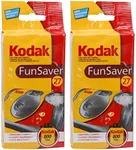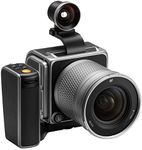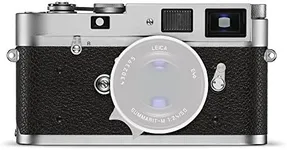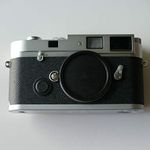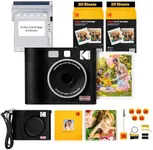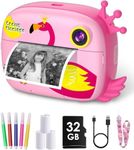Buying Guide for the Best Film Cameras
Choosing the right film camera can be a rewarding experience, especially if you appreciate the art and nostalgia of analog photography. When selecting a film camera, it's important to consider several key specifications that will impact your photography experience. Understanding these specs will help you find a camera that fits your needs and preferences, whether you're a beginner or an experienced photographer.Camera TypeFilm cameras come in various types, including point-and-shoot, SLR (single-lens reflex), and rangefinder cameras. Point-and-shoot cameras are compact and easy to use, making them ideal for beginners or casual photographers. SLR cameras offer more control over settings and interchangeable lenses, which is great for those who want to experiment with different photography styles. Rangefinder cameras are known for their precision and are often favored by street photographers. Choose a camera type based on your level of experience and the kind of photography you want to pursue.
Film FormatFilm format refers to the size of the film that the camera uses. The most common formats are 35mm, medium format, and large format. 35mm film is widely available and versatile, making it a popular choice for most photographers. Medium format film offers higher resolution and better image quality, which is ideal for professional work or fine art photography. Large format film provides the highest quality but requires more specialized equipment and is less portable. Consider the availability of film and your desired image quality when choosing a film format.
Lens CompatibilityLens compatibility is crucial if you plan to use different lenses for various photography styles. Some film cameras have fixed lenses, while others allow you to interchange lenses. SLR cameras typically offer the most flexibility with interchangeable lenses, while point-and-shoot cameras usually have fixed lenses. If you want to experiment with different focal lengths and effects, choose a camera with interchangeable lenses. Otherwise, a fixed-lens camera might be sufficient for general photography.
Exposure ControlExposure control determines how much light reaches the film, affecting the brightness and quality of your photos. Cameras can have manual, automatic, or semi-automatic exposure control. Manual control allows you to adjust settings like shutter speed and aperture, giving you full creative control. Automatic exposure is convenient for beginners, as the camera adjusts settings for you. Semi-automatic modes offer a balance, letting you control some settings while the camera handles others. Choose the level of exposure control based on your comfort with adjusting camera settings and your desire for creative control.
Build QualityBuild quality refers to the materials and construction of the camera. A well-built camera is more durable and can withstand regular use and various shooting conditions. Metal-bodied cameras are generally more robust than plastic ones, but they can be heavier. Consider how and where you plan to use the camera. If you need a rugged camera for outdoor adventures, prioritize build quality. For casual or indoor use, a lighter, less durable camera might be sufficient.
Viewfinder TypeThe viewfinder is the part of the camera you look through to compose your shot. There are optical viewfinders, electronic viewfinders, and LCD screens. Optical viewfinders, found in SLR and rangefinder cameras, provide a clear, real-time view of the scene. Electronic viewfinders and LCD screens, more common in modern cameras, can offer additional information like exposure settings but may have a slight lag. Choose a viewfinder type based on your preference for real-time viewing and additional information.
Metering SystemThe metering system measures the light in a scene to help determine the correct exposure settings. Common metering modes include center-weighted, spot, and matrix metering. Center-weighted metering averages the light in the center of the frame, spot metering measures a small area, and matrix metering evaluates the entire scene. If you often shoot in varied lighting conditions, a camera with multiple metering modes can be beneficial. For more controlled environments, a simpler metering system might suffice.


